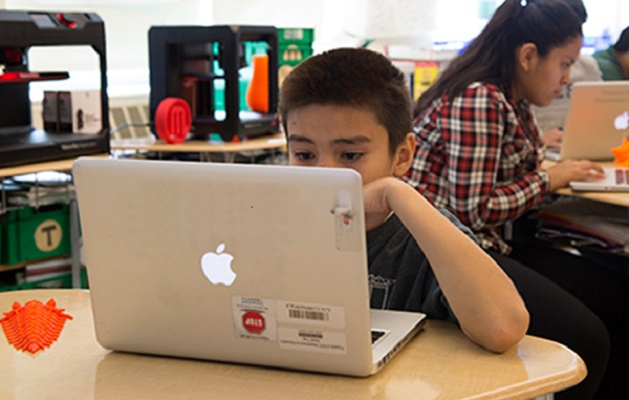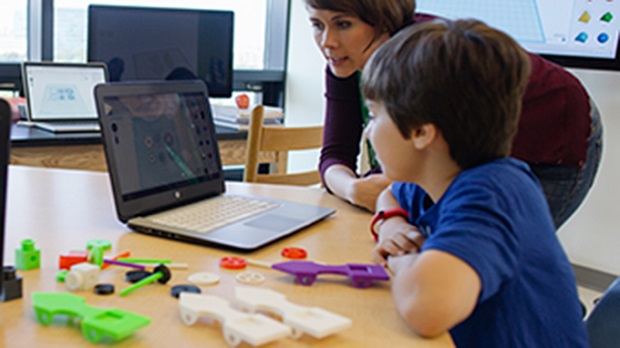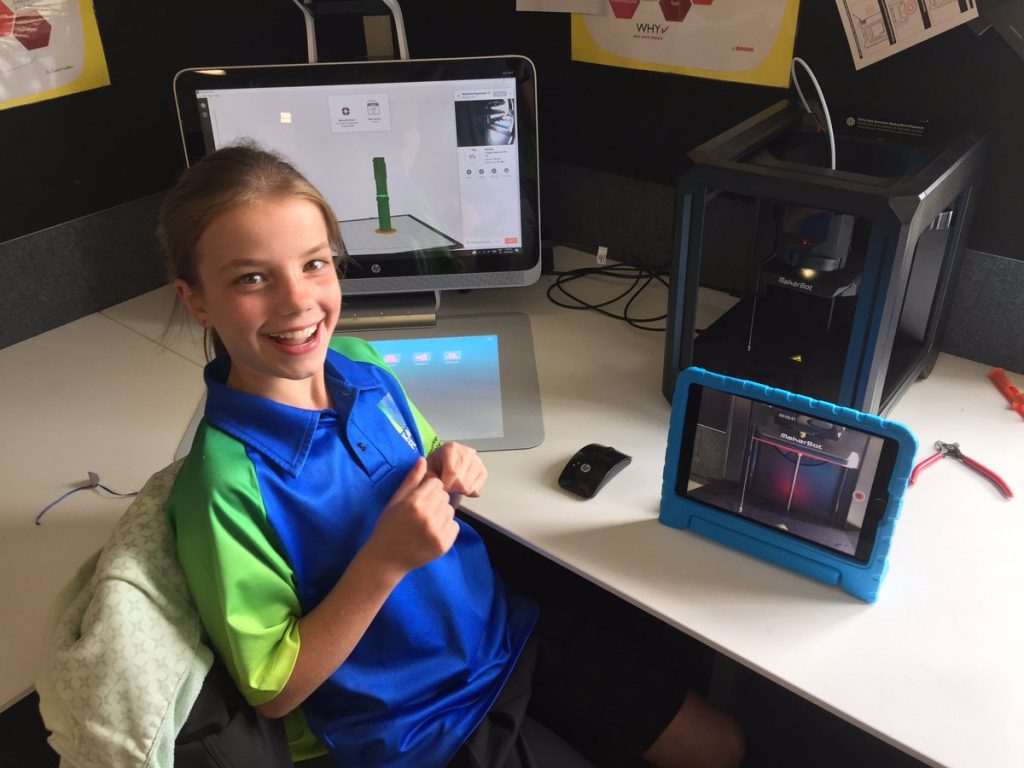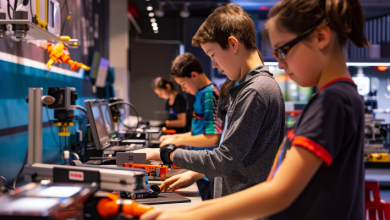Why it’s time to get serious about 3D technology

While the use of 3D technology opens up huge opportunities for innovators and entrepreneurs, there is still little evidence of it being promoted in New Zealand schools.
“We are way behind countries like the US and the problem is that it puts our kids at a disadvantage,” says Murray Clark from Ricoh New Zealand Limited. “For a country that is supposed to be innovative, we seem to be falling behind in recent years.”
In his State of the Nation address of 2013, US president Barack Obama called 3D Printing a technology that has “the potential to revolutionise the way we make almost everything”. Accordingly, a programme was set up to put a 3D printer into every school in the USA, a move that Mr Clark says showed that the US government “saw the value and and the need to educate our next generation of innovators to take advantage of it”.
“So far, we haven’t done this in New Zealand. The biggest challenge is that most teachers do not know how to teach 3D printing. There are a lot of 3D printers catching dust in corners of our schools because no one is passionate about the technology and getting the thing to print becomes as big a job as teaching it. It’s like, ‘I’ve got enough to do without getting this thing to work’.” Teachers were not expected to be technology people when they signed up for teaching, so it’s a challenge for the schools.”
At 3Design in Tauranga, Chad Vorwerk says New Zealand as a whole is still on the brink of adopting 3D technology. “As some would say, ‘people’s hands are still on their pockets, not in them’. Some of the more affordable basic technology still requires much manual input from the user, and this can be intimidating for teachers. A lot of time needs to be invested by the teacher or individual to not only learn how to run and maintain these machines but also to simply run them constantly to produce an entire classes worth of prints. Some teachers are giving up holidays or working up to 25-30 hours a week over their normal duties to achieve this.”

Getting New Zealand schools to catch up with the rest of the world is going to take time and education, Mr Vorwerk says. “There are multiple ways in which we can assist in the growth of this industry. Seeking out companies like ours which can provide not only the equipment but the technical support and training is essential. Being left with a machine that you can’t use will only discourage growth and acceptance. We are already starting to see a new generation of printers that are fairly “Plug and Play” like the Cubicon range; these are are cost effective to run and require minimal input.”
Mr Vorwerk says he doesn’t believe making 3D printing compulsory in schools is necessarily the answer, “although it may help to fast track the adoptive process”. “After many discussions with teachers, it seems it is more important to find a way to really engage with students, and to get them to want to take the courses that are offered with which design and 3D printing are incorporated.”
To this end, 3Design has launched a 3D printing “farm”, a collection of printers for customers to use by remote access. Rather than submitting a file for someone else to process, the user has control over the printer – “vital for individuals to learn how the process works”, says Mr Vorwerk. “They can watch via live stream as their part grows which can be projected for the class to watch and see if there are design feature which could be improved for next time.”
Using the farm also eliminates the need for capital expense or technical knowledge of how to run or maintain a machine. Nor need there be any concerns about equipment getting damaged.
“3D printing, or additive manufacture, is already disrupting most of today’s manufacturing processes,” says Mr Vorwerk. “The world appears to be moving toward customisation for each individual rather than a one for all policy, and 3D printing is fast becoming the number one choice for prototyping because of its increase in precision, materials, relative low cost and accessibility.
“It is important for students to start learning not only how this technology works but how it will be applied in their future careers.”
Mr Vorwerk and his colleagues have noticed that students are getting more creative and confident in their use of 3D printing technology. “They are not only generating digital files but also demonstrating the ability to create real world parts. A prime example of this is students making their own fidget spinners.”
He says that a school needs to to allow itself up to six months to become 3D print proficient. “If our services are used well this can be reduced significantly. With a plug and play printer like the Cubicon, it can be as little as one to three months.”
According to Mr Clark, people need to understand that 3D printing is about the design, not the machine or the software. “If you have a good enough machine and good enough software, you can focus on the design. You need a machine that’s as good as maintenance-free, and if you buy the right product you’ll get incredible value out of it.”
Mr Clark says schools need machines with replaceable, consumable parts, particularly a clip on, clip off extruder.
MakerBot, pioneered desktop 3D printing and continues to update its technology to bring it into the reach of the masses, both in terms of price and ease of use. Distributed in New Zealand by Ricoh, they are assisting Rotary Clubs to get 3D printers into all schools here, continuing president Obama’s lead.
MakerBot has also established a website, www.thingyverse.com where anyone can access guidance on using 3D technology, no matter what brand of printer they are using. And there’s a section dedicated to teachers. Schools or teachers can create an account (free of charge) and download lesson plans for 3D printing, and share students’ or teachers’ work.
Lessons are divided into subjects and year level, from new entrants through to university level projects, and are as diverse as recreating artefacts to converting drawings to 3D objects.
As an example, one contributor has shared a design for creating cheap, waterproof shoes suitable for use by children in South Africa. This project encompasses technology and design to solve a real world problem in a practical and cost-effective way.
MakerBot also has a 24-7 support service meaning teachers and students can access immediate help with printing issues out of school hours if necessary.
Rotary on a mission to get 3D printers into schools
Rotary may be 112 years old but it is keeping up with the times better than most. One of Rotary’s current goals is to get 3D printers into every school in New Zealand.

This ambitious project was kick-started by Rotary Newmarket’s Brian McMath who got 3D printer manufacturers MakerBot on board. They donated a MakerBot which was given to Newmarket Primary School where, according to principal Wendy Kofoed, it filled a vital link between education and technology.
“Ricoh New Zealand, distributors of Makerbot have got behind the initiative and we have developed a great partnership with them,” says Mr McMath.
Since then, other Rotary Clubs across New Zealand have joined the venture, and Sir Richard Taylor, founder of Weta Workshop, is championing the cause.
“I view 3D printing as a technology which affords greater opportunities within many sectors of New Zealand business and I believe it will have a fundamental impact on modern manufacturing practices,” he says.
“At Weta Workshop we are reliant on this technology, we have 16 3D printers running around the clock.
“The sooner we get New Zealand children working with this tech, the sooner they will be able to grasp the potential and positive impact it may have on their future lives.
“3D printing is set to change the way our world is built. New Zealand children can get the jump on this change through this wonderful Rotary Newmarket endeavour.”
To date 19 printers have been given to mainly low decile schools.
Mr McMath is asking primary schools who believe they have the skills to embrace 3D technology to contact their local Rotary club. “Newmarket Rotary has developed the model for other clubs to pick up. Some co-funding maybe available through charitable trusts associated with Newmarket Rotary so we encourage schools who meet the criteria to approach their local Rotary and ask them to contact us at Newmarket.”
Ultimately, the club would like to see schools collaborating on a 3D technology project such as creating parts to build a giant moa. “There’s a moa on display at Te Papa but some bones are missing. Wouldn’t it be great if school children could collaborate to recreate the missing parts?” says Mr McMath.









